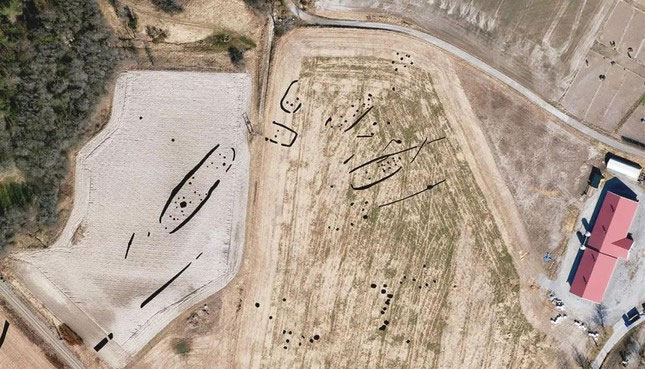Archaeologists in Norway have uncovered the remnants of a cluster of longhouses, including one of the largest architectural structures ever found in the region.
Investigations of agricultural land in Gjellestad, located about 85 kilometers southeast of Oslo, have revealed the remains of at least five longhouses beneath the ground.
According to a statement from the Norwegian Institute for Cultural Heritage Research (NIKU), the longhouses are located approximately 500 meters northeast of the Viking ship burial site discovered in 2018 through radar scanning.

Remnants of the longhouses found using ground-penetrating radar.
Archaeologists have yet to determine the dating of these houses, but the nearby ship burial is believed to date back to the late Iron Age in the region, around 750 to 850 AD.
The largest uncovered longhouse measures nearly 60 meters in length and 15 meters in width. Lars Gustavsen, an archaeologist at NIKU who conducted the discovery using ground-penetrating radar (GPR), suggests that the longhouse may not have been inhabited but rather used as a ceremonial space.
“The most reasonable interpretation of the house is as a hall used for religious, social, or political purposes, rather than for living,” Gustavsen stated.
It remains unclear whether the buildings predate the burial of the ship. Gustavsen remarked, “A similar house was excavated nearby a few years ago and dates back several hundred years before the Viking Age. If we can obtain a similar dating for the newly discovered houses, we can at least infer that Gjellestad was an important site for several centuries.”
The nearby Viking ship, measuring over 19 meters long and approximately 5 meters wide, was found in a mound that had been flattened after decades of plowing. About 20 other graves were discovered nearby. Archaeologists believe that the ship once contained the remains of a Nordic king or queen, although no human remains have been found there.

















































